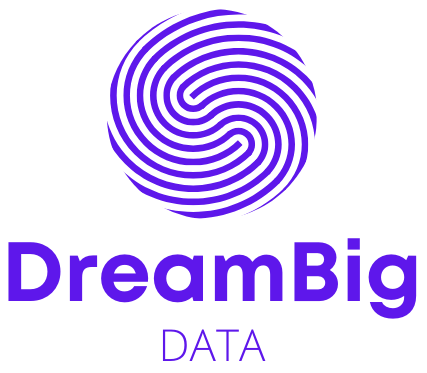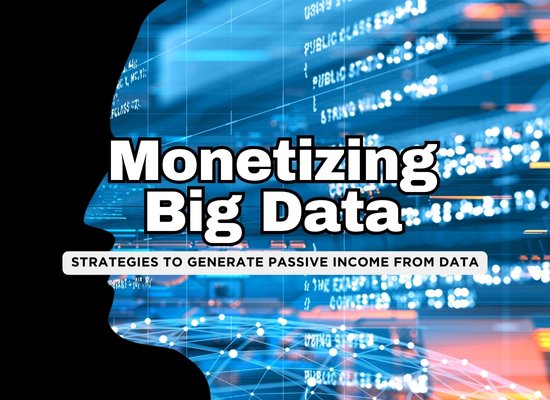In today’s digital economy, data is one of the most valuable assets, yet most businesses and individuals fail to capitalize on it. While tech giants profit by collecting and analyzing massive amounts of information, there are ways for small businesses, analysts, and entrepreneurs to leverage data for steady, recurring income.
From selling insights to launching subscription-based platforms, here are three powerful ways to turn data into ongoing revenue, with example scenarios to illustrate how you can get started.
1️⃣ Sell Data-Driven Insights to Businesses
Companies depend on data-backed insights to improve decision-making, optimize marketing, and predict future trends. If you have access to valuable data—such as consumer behavior, market trends, or operational metrics—you can create reports, dashboards, or forecasts that businesses will pay for.
Example Scenario
A freelance market analyst tracks social media trends and e-commerce sales data. After noticing a correlation between viral TikTok videos and certain product sales, they compile a monthly trend report predicting which types of products will gain traction. They offer a subscription-based service where e-commerce brands pay a fee to access these insights, helping them stay ahead of competitors.
How to Get Started
- Identify a niche where data can provide real value, such as retail, finance, or consumer trends.
- Collect and analyze relevant data using public sources, surveys, or business partnerships.
- Package insights into easy-to-understand reports or dashboards and set up a recurring subscription model.
2️⃣ Create a Data-as-a-Service (DaaS) Platform
A Data-as-a-Service (DaaS) business collects, processes, and sells data through an online platform. This model allows users to access raw data, analytics tools, or pre-built datasets on demand.
Example Scenario
A developer builds a platform that aggregates real estate pricing trends across different cities. The platform continuously updates with new housing prices, rental data, and neighborhood growth patterns. Real estate investors and agents subscribe to access real-time data, helping them make informed decisions. The developer monetizes the platform through tiered pricing, where higher-paying users get access to premium insights and predictive analytics.
How to Get Started
- Choose a high-demand data niche, such as real estate, financial markets, or healthcare analytics.
- Set up a platform that organizes and presents data in an easy-to-use format.
- Offer different pricing plans based on access levels, such as free basic reports and premium paid insights.
3️⃣ Develop Data-Driven Products
If you can transform raw data into a useful tool or service, you can create a recurring revenue stream. Data-driven products include automated reports, AI-driven analytics tools, and interactive dashboards that help businesses optimize their operations.
Example Scenario
A small logistics company struggles with route efficiency and fuel costs. A data scientist develops an AI-powered tool that analyzes traffic, delivery schedules, and fuel consumption to recommend the most cost-effective routes. The company offers this as a subscription service, where other logistics businesses pay a monthly fee to use the tool, saving money while improving efficiency.
How to Get Started
- Identify a recurring problem businesses face that can be solved with data.
- Build a data-driven tool, such as a predictive analytics dashboard, AI assistant, or automation service.
- Offer a subscription or licensing model where businesses pay to access the tool.
4️⃣ Monetize Data Through Affiliate Marketing and Lead Generation
Many companies need high-quality leads to grow their customer base. If you have access to data on potential customers, you can create data-driven lead generation models that businesses will pay for.
Example Scenario
A travel blogger tracks airline ticket prices, hotel rates, and booking trends. They develop a system that predicts when travel deals will be at their lowest. Instead of selling direct access to this data, they set up an affiliate model, where users sign up for alerts and book through their affiliate links. The blogger earns a commission on every sale while continuously gathering more user data to improve the system.
How to Get Started
- Collect data on consumer trends or behaviors related to a high-demand industry, such as travel, e-commerce, or real estate.
- Create a website, app, or email list that provides data-driven recommendations.
- Partner with businesses through affiliate programs or pay-per-lead deals where companies pay you for every qualified customer.
5️⃣ License Proprietary Datasets to Companies
If you collect unique data that businesses or researchers need, you can license your datasets for a recurring fee. Unlike selling raw data, licensing allows multiple companies to pay for access while you retain ownership.
Example Scenario
A cybersecurity expert develops a database of known phishing scams, malicious IP addresses, and fraud patterns. Instead of selling this data once, they license it to cybersecurity firms and financial institutions, which integrate it into their fraud detection systems. Companies pay an annual fee for ongoing updates, ensuring the dataset remains valuable over time.
How to Get Started
- Identify data that is difficult for others to collect but highly valuable for businesses.
- Structure licensing agreements where clients pay for access rather than owning the data outright.
- Set up API-based access or periodic updates to provide fresh data, ensuring continued subscription revenue.
6️⃣ Use Big Data for Personalized Advertising and Targeted Marketing
If you own a website, app, or online platform that attracts visitors, data-driven advertising models can turn that traffic into recurring revenue. Businesses are willing to pay for highly targeted ad placements based on user behavior, demographics, and interests.
Example Scenario
A fitness app tracks user workouts, dietary habits, and fitness goals. Instead of using generic ads, it leverages user data to display targeted promotions for health supplements, meal plans, and workout gear. Brands pay a recurring fee to display ads that match user preferences, making them more effective. The app monetizes its data without directly selling it, ensuring privacy compliance.
How to Get Started
- Build an audience or user base through a website, app, or platform that collects valuable engagement data.
- Partner with advertisers who benefit from precision targeting based on your audience’s data.
- Implement AI-driven ad placements that improve conversions, increasing the value of the service to advertisers.
7️⃣ Automate Data Monetization with AI-Driven Systems
Big data is most valuable when it can be processed and analyzed efficiently. By developing AI-driven systems that automatically generate insights, recommendations, or alerts, businesses can create a hands-off revenue stream where customers pay for continuous access.
Example Scenario
An agricultural startup gathers climate, soil, and crop data from various farms. They develop an AI-powered system that predicts optimal planting and harvesting times based on weather patterns. Farmers subscribe to the service for a monthly fee, receiving real-time insights that help them maximize their yields. The system runs automatically, generating recurring income with minimal human intervention.
How to Get Started
- Identify an industry where automated data insights can solve real problems.
- Develop a machine learning model or AI-driven system to analyze and predict trends.
- Offer the service as a subscription, ensuring ongoing updates keep it relevant.
8️⃣ Provide Data Consulting Services on a Subscription Model
Many businesses lack the expertise to analyze and interpret big data. By offering data consulting services, you can help companies make sense of their data, implement better analytics strategies, and improve decision-making. Unlike one-time consulting, a subscription model provides ongoing support and insights.
Example Scenario
A financial analyst specializes in helping e-commerce brands optimize pricing strategies using data. They offer a subscription-based consulting service where businesses receive personalized reports, trend forecasts, and pricing recommendations every month. Clients pay a recurring fee to receive continuous insights rather than just a one-time consultation.
How to Get Started
- Identify a niche where businesses struggle with data-driven decision-making.
- Offer subscription-based consulting with regular reports, check-ins, and insights.
- Use automation to scale, providing personalized data dashboards or AI-driven analysis.
9️⃣ Sell Anonymized Data to Research Institutions
Universities, healthcare organizations, and research firms require large datasets for studies and analysis. If you have access to structured, anonymized data, you can sell it to research institutions for ongoing revenue while ensuring privacy compliance.
Example Scenario
A healthcare startup collects anonymized data on sleep patterns from wearable devices. Instead of selling individual user data, they aggregate trends and sell reports to research institutions studying sleep disorders. Since the data is anonymized, privacy concerns are minimized, and the startup generates recurring revenue from multiple research partnerships.
How to Get Started
- Identify industries where anonymized data can provide value for research and innovation.
- Ensure compliance with data privacy laws like GDPR and HIPAA.
- Offer datasets on a licensing basis or through a data marketplace.
10️⃣ Launch a Decentralized Data Marketplace
With the rise of blockchain and decentralized networks, individuals and businesses can sell data directly without relying on large corporations. Decentralized data marketplaces allow users to control and monetize their own data while ensuring transparency and fair compensation.
Example Scenario
A tech entrepreneur builds a decentralized marketplace where individuals can opt in to sell their browsing data. Instead of companies collecting data without consent, users voluntarily provide insights in exchange for micropayments. Advertisers and businesses buy verified, permission-based data, creating a fairer system where individuals profit from their own information.
How to Get Started
- Research blockchain-based data marketplaces and tokenized data exchange models.
- Develop a transparent system that allows users to control and profit from their data.
- Partner with businesses looking for verified, user-consented data.
Final Thoughts: Turning Data into a Long-Term Asset
Big data isn’t just for large corporations. With the right approach, individuals and small businesses can transform data into a recurring income stream. Whether through selling insights, building automated AI tools, or launching subscription-based services, there are countless ways to leverage data for financial success.
The future of data monetization is evolving, with decentralized models, AI-driven automation, and ethical data practices opening new opportunities. Those who act now can position themselves ahead of the curve.


